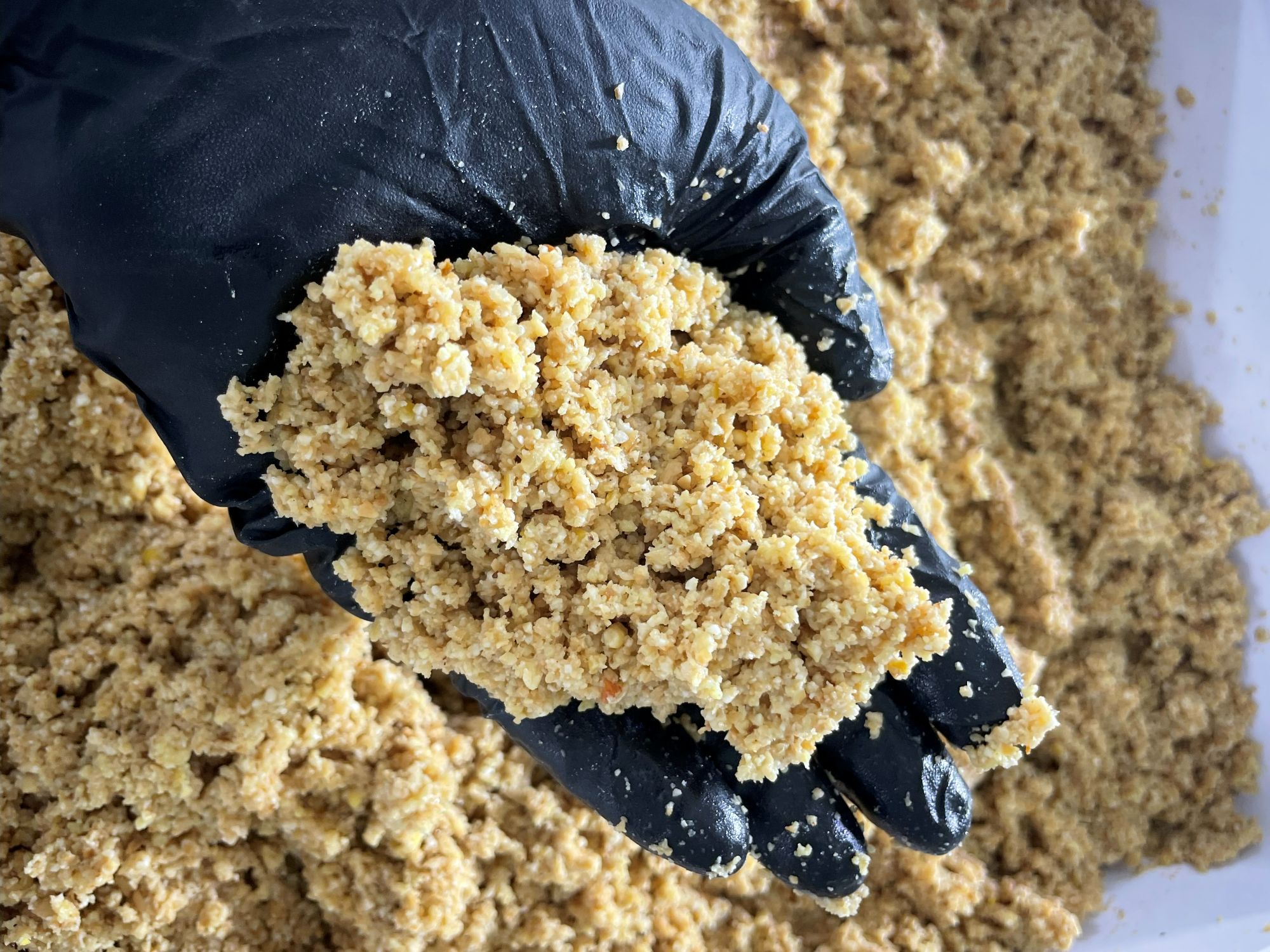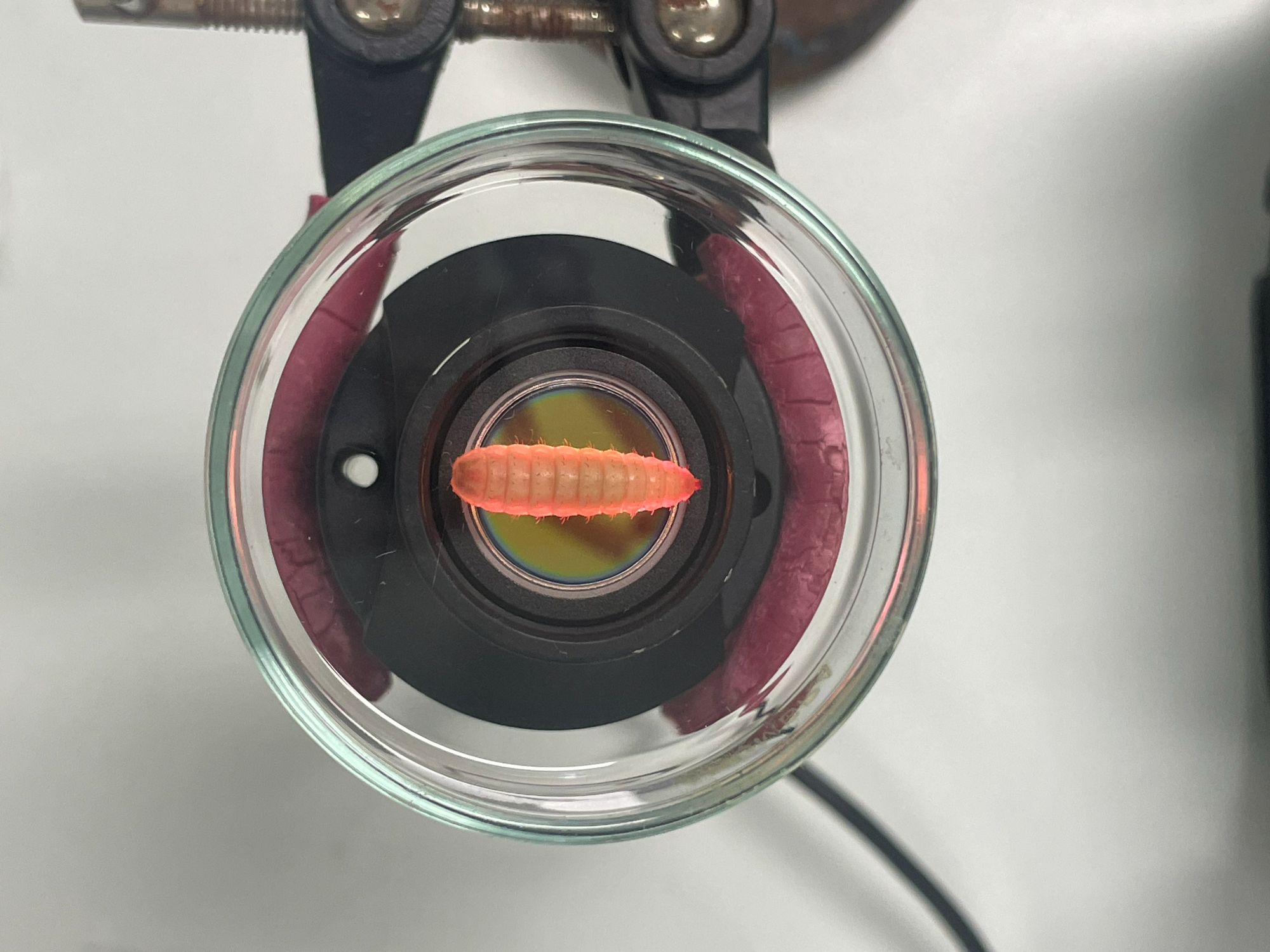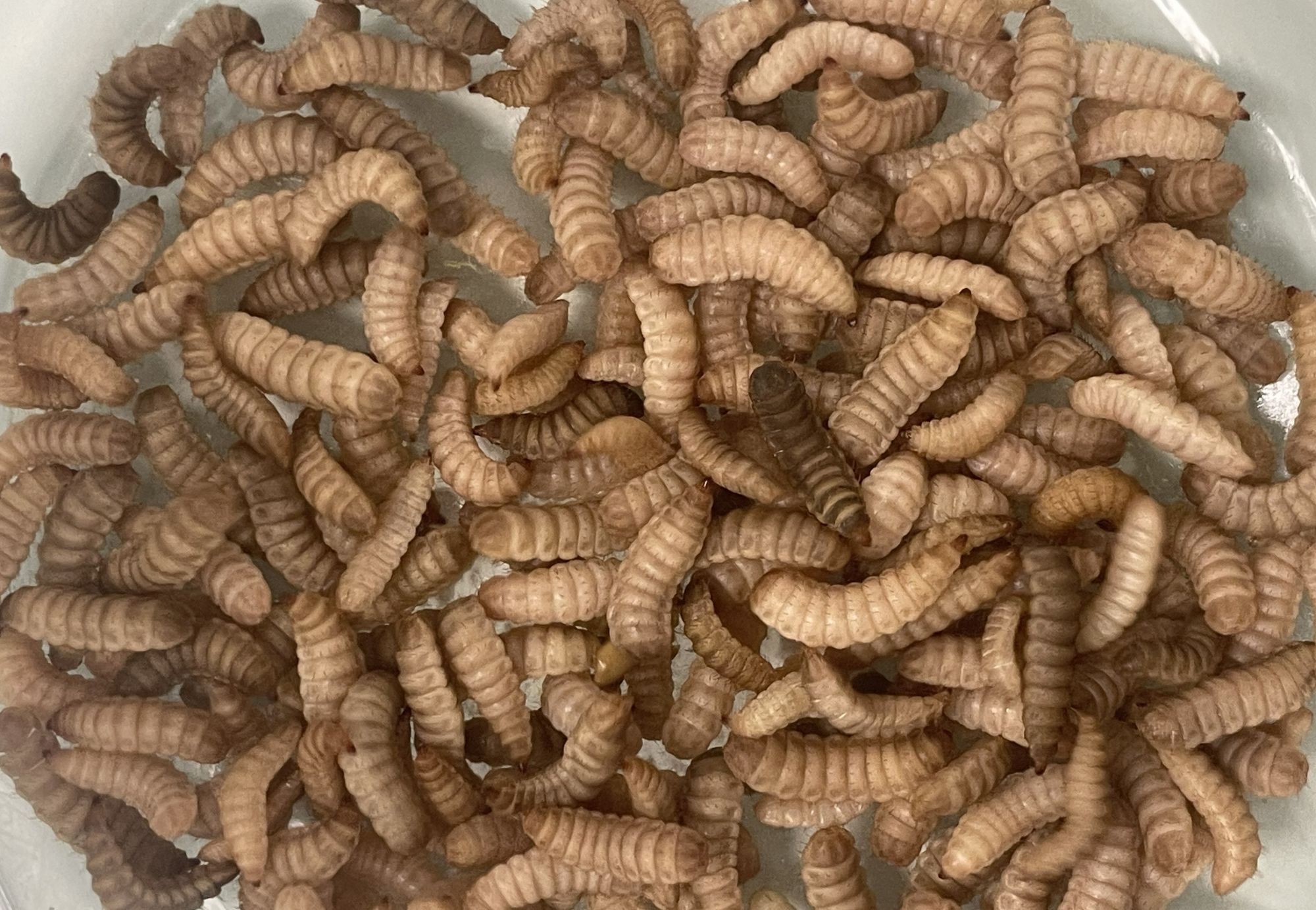Sitting on the bench in a lab at James Cook University’s (JCU) Townsville campus is a compact coffee grinder.
The kind you'd find in the kitchen of a five-bedroom share house populated primarily by university students.
Alongside it is a microwave. However, you’d be wise not to use either of these instruments during your lunch break.
Inside the blade grinder is a coarse brown powder, but that’s where the similarities to coffee end.

The original product? Dried larvae of the Black Soldier Fly.
“Strangely enough,” begins Dr Mikaelyah Davidson, a Post-Doctoral Research Fellow at JCU, “the dried larvae smell quite sweet, almost appetising.”
So why are the team at JCU microwaving and blending the larvae of the Black Soldier Fly?
As Dr Davidson explains; “we’re looking for sustainable options to use in aquafeed.”
The aquaculture feed industry uses a proportion of fishmeal to feed many farmed aquatic animals. This fishmeal includes by-catch from fisheries.
“We know this food source is both depleting and has a substantial ecological impact in our oceans,” says Dr Davidson.
For this project, the JCU team are feeding the Black Soldier Fly larvae, supplied by project partner Fly Farm, a simulated waste diet containing high, medium, and low volumes of protein.
"The great thing about Black Soldier Fly larvae is they have one of the highest conversions of feed to protein in insects, and they do this with products we would commonly consider waste.
“The varying levels of protein in their feed is designed to help us understand whether the larvae output the same amount of protein regardless of what they're fed,” she adds.

So, how do they work that out?
Once they’re nourished and plump, Dr Davidson and her team shine a tiny red-light beam through the larvae, both live and dried.
“Near-infrared spectra readings work really well for predicting the protein content in the dried larvae, but we haven't had the same results for the live ones,” she says.

Following the lab tests, the next step is to add the processed larvae to the to the feed of the black tiger prawns that Tassal, the third and final partner in this project, are producing.
And while it is early days, the prawns on the Black Soldier Fly diet have yet to turn their nose up at the new feed.
“This is giving us optimism that the project can show the larvae of Black Soldier Fly are a sustainable alternative to reduce the amount of fish by-product being used in aquafeed," says Dr Davidson.
“We are also investigating the physiological effects on the prawns when we supplement their regular protein source with the alternative Black Soldier Fly meal.
"Basically, do the prawns find the alternative food source appetising?" she adds.
To date, there hasn’t been any industry trials with prawns, so the team are discovering all sorts of new information - including potential productivity gains and how the prawns defend against potential diseases.
"Prawns lack an adaptive immune system and they are required to get their ‘protection’ from other biological mechanisms,” explains Dr Davidson.
“They can get it from antimicrobial peptides, which we know are present in Black Soldier flies, so we’re investigating whether the feed can also improve the prawns’ response to diseases,” she says.
As for the coffee grinder and microwave in the lab, well, they might still have a life beyond this project.
“I’d have no issue cleaning the equipment and using them for personal use,” laughs Dr Davidson.
“I even have a few of the fly larvae in my backyard, they absolutely love our food scraps and dog poo, they’re champions at processing waste.”
Fly Larvae for Aquafeed is a Food Agility CRC project in partnership with James Cook University, Fly Farm, and Tassal.
